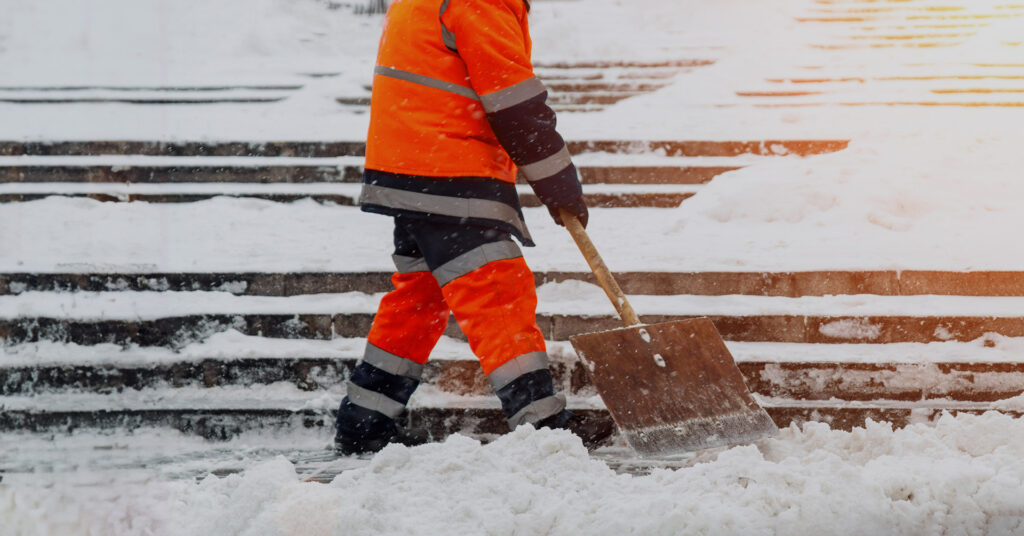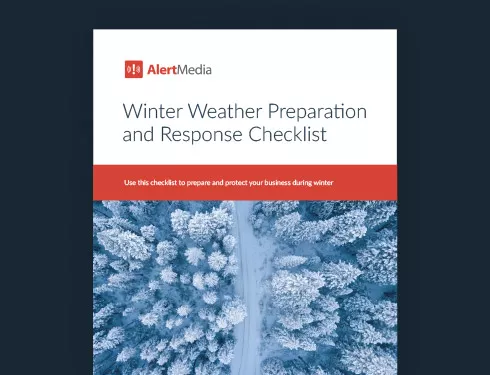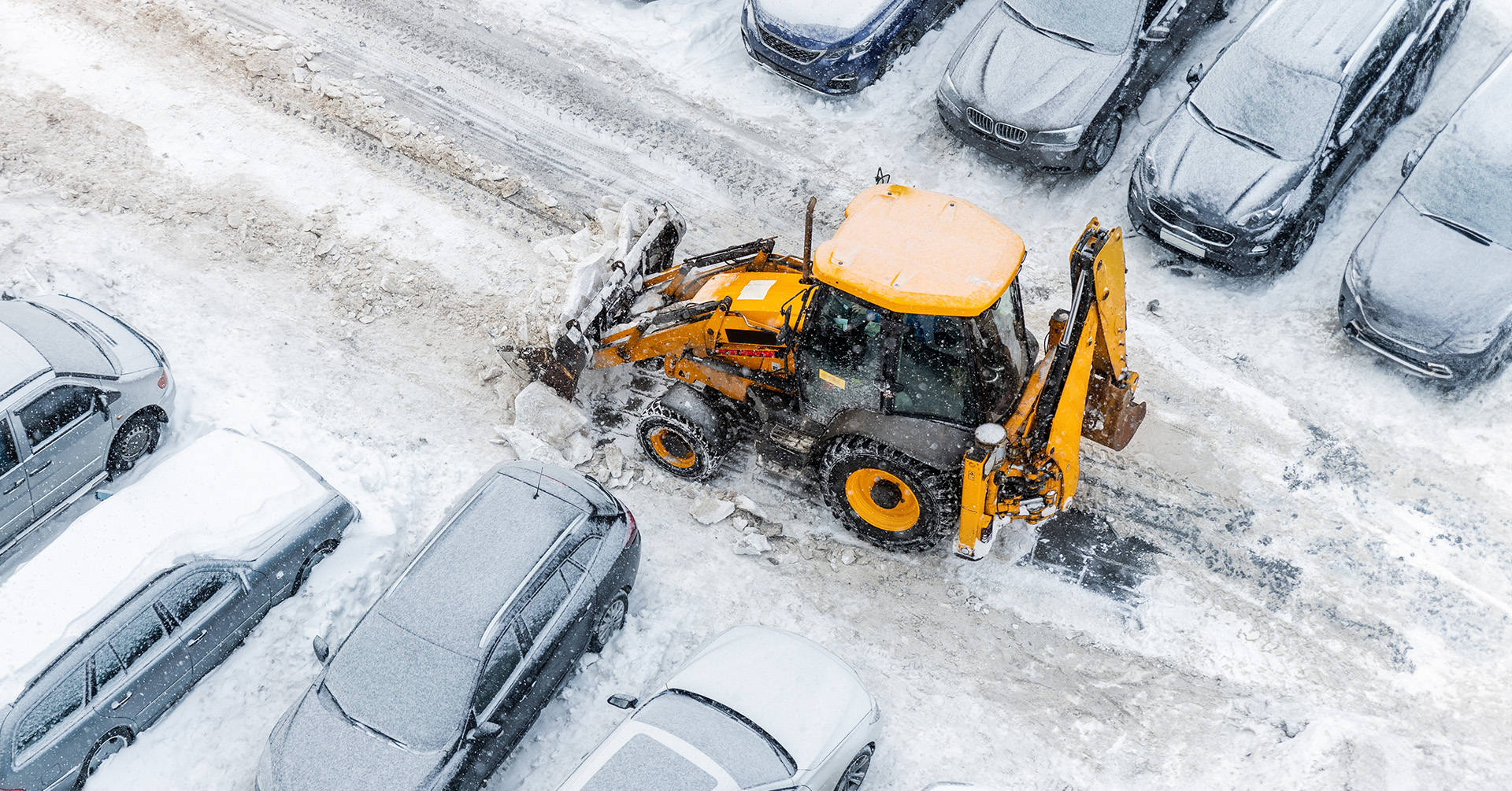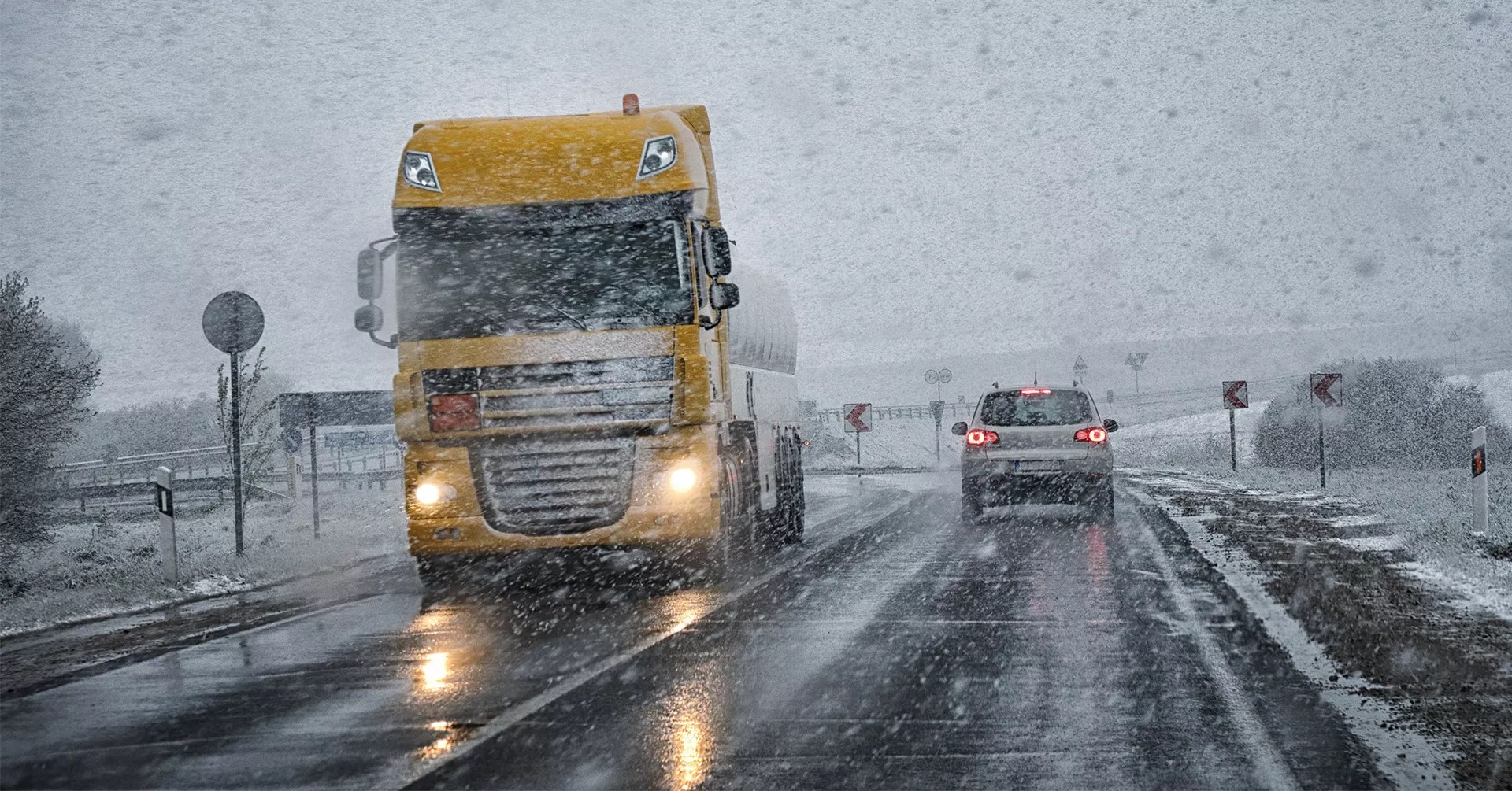
5 Cold-Weather Safety Tips for Employees and Business Leaders
Winter’s harsh realities can motivate your strongest preparedness efforts to avert accidents, illnesses, and downtime. Find unique recommendations for safety leaders and employees.

Winter Storm Uri swept across the U.S., Northern Mexico, and Canada in February of 2021 and resulted in one of the costliest natural disasters in United States history, with more than $195 billion in damages according to a reports from Texas. Record-low temperatures and snowfall caused major disruptions to services like heat, water, and electricity. In Texas alone, close to 4.5 million homes and businesses faced power outages, and hundreds lost their lives due to the freezing temperatures and infrastructure failures. Companies large and small were affected, with major automakers, retail chains, and delivery services forced to halt or delay operations during the storm.
As we look toward the 2023–2024 season, many organizations are bracing for colder temperatures due to the predicted El Niño conditions—and the safety challenges that come with it. Smart businesses will pay close attention to facility safety issues and take proactive measures to protect their employees, both onsite and in the field. Below, we’ll discuss why safety awareness and preparation can go a long way in protecting your business and your people from winter hazards.
Download Our Winter Weather Checklist
Dangers of Working in Cold Weather
Winter storms and extreme cold weather inflict high costs on businesses, from disrupted supply chains to road conditions that impede employees and customers from reaching your location. Additionally, extreme cold weather often leads to an increase in workplace injuries. Optimum Safety Management estimates that between direct and indirect costs, employers will spend $120,000 for a single workplace injury.
Slips, trips, and falls are already one of the most common workplace injuries, with 211,640 non-fatal cases in 2020 alone, according to the U.S. Bureau of Labor Statistics. These slip, trip, and fall hazards escalate during the winter months, along is a variety of other cold-weather hazards, including frostbite, hypothermia, trench foot, and other cold-related illnesses.
Depending on road conditions and your telework options, your business may enact a winter safety plan, reminding employees of winter driving safety policies or telling non-vital workers to stay home until it’s safe to come to the office. But for many employees, work must go on, despite severe winter weather. For these employees, in particular, winter hazards abound. Workers who are most vulnerable to the dangers of cold weather include:
- People who work outside most or all of the time, such as construction workers, lumber workers, utility line technicians, and agricultural workers
- Essential workers who may have to navigate through the elements—including mail carriers, social workers, first responders, and those in the transportation industry
- Service professionals who switch between working inside and outside during their shift, including plumbers, cable service technicians, and electricians
- Workers who labor in poorly insulated or non-heated areas such as freezer storage
- Older adults and individuals with diabetes, hypertension, hypothyroidism, and other pre-existing health problems
Are there OSHA regulations related to cold-weather safety?
While there is no OSHA standard specific to worker safety in cold-weather environments, employers have a duty to provide workers with a place of employment free from recognized hazards—and that includes cold stress. Also known as a duty of care, the safety of employees is the responsibility of employers according to OSHA’s general duty clause.
This concerns some businesses: If they’re told to prepare for cold weather but aren’t given specific guidelines to do so, how can they prepare sufficiently? The reality is that cold weather can be an enormous danger, but the risks it presents are both manageable and foreseeable. Having a plan for cold-weather safety will help you avoid injuries and reduce worker’s compensation claims, days lost, and other disruptions to business continuity.
With that in mind, here are five cold-weather safety topics with tips for employers and employees.
Cold-Weather Safety Tips for Business Leaders and Employees
1. Develop plans and procedures for cold weather

Cold-weather preparedness tips for safety leaders
Winter weather can be very serious and storms can intensify quickly, so it’s important to have a plan in place for those who are exposed to the elements for part or all of their workday. Creating a plan for the cold months will help mitigate incidents and empower employees to react quickly if a problem arises.
If you don’t yet have a winter safety plan, consult OSHA’s winter weather preparedness guidelines as you develop your workplace safety plan. You can also create a winter preparedness checklist to ensure employee safety and business continuity all season long. At a minimum, employers should be prepared to:
- Define possible emergencies and establish protocols for responding to incidents and injuries efficiently
- Implement and enforce safe working practices, such as frequent breaks in warmed areas or portable space heaters
- Plan to record any cold-related safety incidents and use an after-action report to review any necessary actions
Cold-weather preparedness tips for employees
As an employee, you should be confident that your employer is familiar with the risks you face working in the snow and cold and will provide adequate training and equipment to keep you safe. However, your participation in your safety is equally important. Familiarize yourself with your organization’s cold-weather procedures so you’re fully prepared when in the field.
Depending on the type of work you do, you might find yourself outdoors in a city, alone in a remote location, or somewhere in between. It’s also important to keep in mind that material support, such as warming stations, medical services, and other employees, can be highly variable and subject to your accessibility. When reviewing new cold-weather plans for the first time, think about the support you’ll have while on the job and raise any questions or concerns as soon as possible. And if you have any safety concerns, immediately raise them with your supervisor to resolve them promptly. However, if you find that you don’t have a way to effectively communicate your concern, it is your right to raise a complaint with OSHA.
2. Make prevention an everyday responsibility
Cold-weather hazard prevention tips for safety leaders
As you know, some work just has to be done in the cold. But not all cold is created equal. In fact, large temperature swings, upwards of 50°F, are regularly recorded in single days during winter months, so it’s important to pay attention to daily weather forecasts and try to make the schedule work in your favor. If more tasks are scheduled during the warmer hours and fewer in the early morning/late-night cold, your workers will be less likely to face dangerous conditions.
No matter how well you plan, sometimes Mother Nature has a surprise up her sleeve. That’s why it’s important to keep in contact with your employees at all times. Not only should you be able to reach out to them with updates or changes to the plan, but they should also be able to contact you to report emergencies or ask questions.
Include cold-weather safety topics during meetings in winter months, perhaps as part of your monthly safety topics initiative. By maintaining an emphasis on cold-weather safety, you’re much more likely to succeed in incorporating it into your safety culture.
Cold weather safety topic ideas
- Defensive winter driving
- Frostbite first aid
- Signs of cold-related illness
- Severe weather communication protocols
- Carbon monoxide safety
- Proper footwear for ice and snow
- Preparing to be snowed in
- Space heater safety
- Power outages in the cold
- Preventing hypothermia
Cold-weather hazard prevention tips for employees
If your work requires you to be exposed to cold temperatures for extended periods of time, the most important defense you have is your clothing. Make sure to wear layers of appropriate thickness, and be sure to consider how these heavy clothes might limit your range of motion while performing your tasks.
If you’re one to skip breakfast on a normal day, you might want to rethink that when it’s cold out. Nutritionists recommend eating foods that take longer to digest when it’s cold, as this helps raise your body temperature (a process called “thermogenesis”). Examples include bananas, ginger tea, oats, coffee, red meat, sweet potatoes, and squash. Many foods with healthy fats, proteins, and carbohydrates are complex and take longer to digest.
You should also drink more water than you typically do because, unintuitively, we dehydrate faster in cold temperatures. Also, dehydration causes headaches, fatigue, and dizziness—all situations that could endanger colleagues who need to stay alert.
3. Maintain a winter emergency kit
Winter emergency supply tips for safety leaders
Necessity is the mother of invention, and thanks to the harsh conditions of winter, we have a wide variety of tools to help us cope with the challenges we might face. Here are the tools employers should keep stocked in emergency supply kits around the office and worksite, as well as in company vehicles.
- Foil and/or wool blankets
- Ice scraper
- Snow brush
- Shovel
- Flashlight
- Extra batteries
- Road maps
- Jumper cables
- Road flares or reflective warning triangles
- Basic first aid kit
We recommend keeping all items in a waterproof bag or clear plastic bin in a cool, dry place, like a closet or in a vehicle’s trunk. For a more extensive list of emergency supplies for your kit, the Department of Homeland Security has created a checklist for various situations. Regardless of what you include in your emergency kit, schedule a periodic restocking to keep supplies plentiful and in tip-top shape.
Winter emergency supply tips for employees
When you’re on the job, you won’t want to lug around every piece of cold-weather gear, just the essentials and the ones you can easily carry on you. Waterproof bags are a good idea in case of heavy rain or snow, and all of these items can easily be carried in a backpack, hip pack, or in your pockets and on your person.
- Snacks
- Bottled water
- Spare cell phone charger
- Rechargeable battery pack
- Extra layers of loose-fitting clothing and gloves or mittens
- A hat that covers your ears
- Chemical hand warmers
4. Implement technology solutions to ensure safety outcomes
Winter safety technology tips for safety leaders
Being responsible for the well-being of others means you can’t leave any advantage on the table, and that’s especially true in the case of technology. These days, maintaining old systems like phone trees means ignoring newer technologies that can multiply your reach without multiplying your work. Modern software can also help improve safety outcomes.
The first digital tool that any 21st-century safety leader needs is a mass notification system. When a new storm rolls in, a worker needs help, or any other winter safety concern, a secure and intuitive communication tool will be the first thing you turn to when coordinating response and recovery.
A perfect complement to a communication system is a threat intelligence solution. These are powerful systems that collect and verify information on current and potential threats, including severe cold-weather conditions. Some, including AlertMedia’s, even allow you to speak directly with an intelligence analyst who can help you get more context to understand your threat outlook. Then, it’s just a few simple steps to create and send a notification to your impacted employees.
A safety alarm, like a lone worker safety app, keeps your business connected to employees when they need you most. It’s best if you can use an app that monitors your employee’s location data so first responders know exactly where to go if your employee is hurt or in danger. These types of emergency communication tools improve lone worker safety and could very well save lives.

Winter safety technology tips for employees
Once you have time to sit down and familiarize yourself with the safety tools and software your company uses, make sure to engage with them critically. Note any questions, concerns, or recommendations so you can pass them on to your supervisor and the safety team. Your feedback helps to improve the tools, best practices, and safety outcomes.
Software solutions might include an emergency notification system, a lone worker safety app, and location-based weather alerts and threat warnings. While some of these solutions act as one-way notifications for you to look out for and act on, others allow for two-way communication and interactive safety monitoring. If you are unsure about how to get the most out of these systems, ask questions and seek additional training.
5. Stay ahead of injuries related to cold-weather events
From icy walkways to frostbitten fingers and toes and the myriad other winter-weather dangers, the risk of injuries is high, but it’s possible to prevent many crises from manifesting. Here are some of the most common winter workplace injuries and illnesses to be aware of:
- Slips and falls
- Frostbite
- Hypothermia
Cold-weather injury prevention tips for safety leaders
Winter slips and falls are most likely when surfaces are wet or icy and can result in sprains, bruises, broken bones, and potentially more serious injuries. Take extra precautions to minimize worksite hazards that could lead to slips and falls:
- Regularly inspect walking surfaces like driveways, and replace or recoat any flooring that shows signs of wear and tear
- Spread salt on paved surfaces that become iced over
- Encourage employees to tread carefully and wear appropriate footwear with rubber treads
- Keep work areas free of clutter and in good working condition
- Provide adequate lighting so potential hazards are clearly visible
Frostbite is a dangerous complication of prolonged cold exposure. According to the Centers for Disease Control and Prevention (CDC), the most common sign of frostbite is redness or pain in any skin area. Other warning signs include numbness/loss of feeling, a white or grayish-yellow tint to the skin, or an abnormal feeling such as waxy or firmer skin. If one of your employees begins to exhibit symptoms or signs of frostbite, the CDC recommends the following:
- Move the worker into a warm room as quickly as you can
- Immerse the affected area in warm water (NOT hot water), or warm the affected area using body heat
- Don’t allow the employee to walk on frostbitten feet or toes
- Don’t use a heating pad, space heater, fireplace, or open flame for warming
- Don’t massage the frostbitten area, as this may cause more damage
Hypothermia (a condition where your body can no longer produce heat) is life-threatening. The National Weather Service reminds us that the risk of hypothermia is not limited to freezing temperatures but can also happen between air temperatures of 30 and 50 degrees. According to the CDC, the most common signs of hypothermia are low body temperature, shivering, fatigue, confusion, drowsiness, slurred speech, or blue-tinted skin. If an employee begins exhibiting signs of hypothermia, the CDC recommends the following safety procedures.
- Request immediate medical attention
- Move the employee into a warm room or vehicle
- Remove wet clothing
- Give the employee warm beverages
- Once the employee’s body temperature has increased, keep them dry and wrapped in a warm blanket, making sure to include the head and neck
Of course, the best defense against conditions like hypothermia and frostbite is prevention, which starts with appropriate clothing, limiting time outside in wet and cold conditions, and closely monitoring the physical condition of oneself and others.
For prevention and first aid information on other cold-induced incidents, such as trench foot, carbon monoxide poisoning, and chilblains, consult the CDC website.
Cold-weather injury prevention tips for employees
The injuries listed above are all serious, but they’re also all predictable and preventable. You can keep yourself and your coworkers safe and warm with these winter safety tips.
The first line of protection against any of these dangers is, of course, dry clothing for both inner and outer layers. Protect against cold air and wind chill by covering all exposed skin, including the face and head, with warm clothing, preferably made of a wicking material. At the first sign of dampness, which usually occurs in the socks or gloves, replace those garments with dry ones.
Plan to spend some time indoors throughout the day. Whether that’s inside a building, shelter, or vehicle, build in a break from the chill. If possible, use the “buddy system,” with teams of two looking out for each other. Partnering up makes it much more likely that someone will be situationally aware enough to spot the symptoms of cold stress (skin discoloration, slurred speech, cold sweating, etc.) and react appropriately.
Finally, if any safety event occurs, including one related to cold weather, you must report the incident. Not only will this ensure the proper response from your company’s emergency management folks, but it also allows them to analyze what went wrong so everyone may be more prepared next time.
Identify Threats Before They Impact Your People
The best way to safeguard your people from cold-weather threats is to be prepared. Whether keeping remote employees informed of severe winter weather threats or reminding field workers of safety policies at the job site, it’s critical to have a two-way mass notification system and real-time threat intelligence solution. With it, you can identify at-risk employees and communicate proactively about winter hazards.




